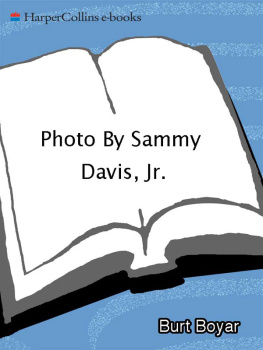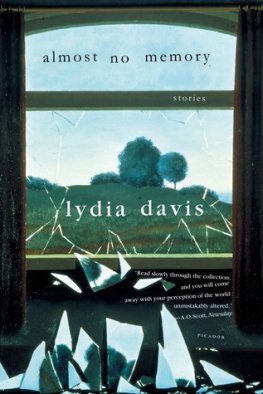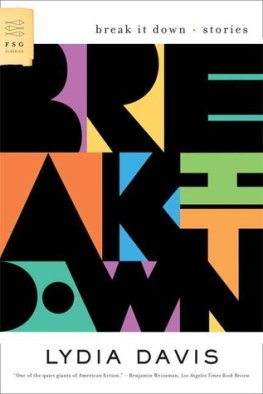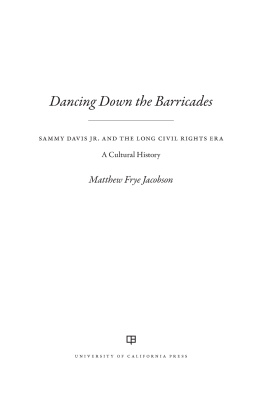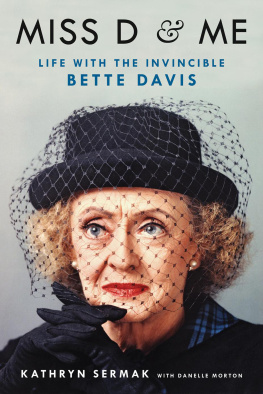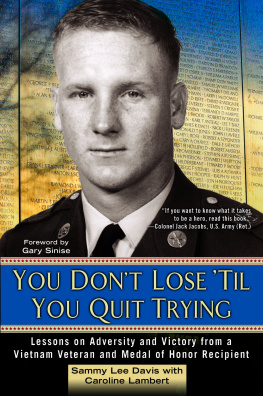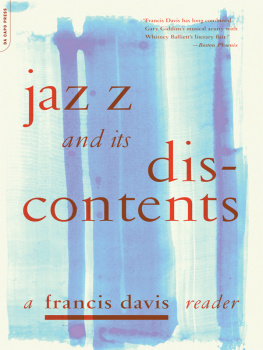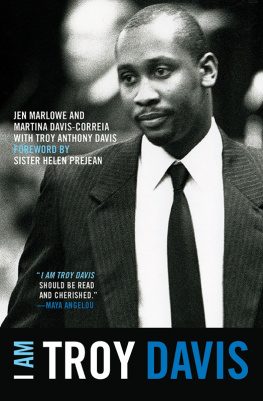In the downstairs office of Sammys Beverly Hills home on Summit Drive, there was a waist-high cabinet that ran the length of the twenty-five-foot wall. It had two shelves filled with the newest of every kind of camera made, with lenses and filters for all of them. I am certain that no professional photographer ever owned half the photography equipment that Sammy had.
Jerry [Lewis] gave me my first important camera, my first 35 millimeter, during the Ciros period, early 50s, Sammy told me. And he hooked me. Then, during Mr. Wonderful , the musical [195758] when I was in New York for a year I met Milton [Greene]. He got me involved with serious photography and using available light.
Milton Greenes son Joshua once said: Milton taught Sammy to see as a camera. It may sound rough, but having one eye was an advantage to Sammy as a photographer because it eliminated the peripheral vision and depth. With only one eye he saw as a camera lens sees.
As Sammys knowledge grew, so did his obsession with having the latest and best equipment. Of course once I had a little education I needed a new Nikon this and a Canon that, both with eighteen lenses and sixty-two filters. In terms of addiction I think there is nothing more powerful than mens toys. This may sound a little paranoid but I am positive that somewhere in Germany, in Japan, there are men awake in the middle of the night, thinking, Now, Sammy Davis has an extra $50,000, lets think of something he doesnt have that we can sell him, the ultimate, the definitivehell jump to be the first one to have it and well get that $50,000. I am positive of that. I am positive that they sit and plot and plan, because whenever I think Ive got the ultimate, the definitive of anything, somebody says, Were here, with the newest, the latest. Im positive of it, man.
When Sammy first started taking pictures, he used a Brownie or whatever inexpensive camera was available. In 1945 I was playing the Beachcomber in Florida. Steve Lawrence was down there, too, in the army, doing a Special Services camp show, and we went to my hotel and hung out. Steve said, Oh, youve got the new Polaroid. I just got some stock in that. You ought to buy some, too.
I said, Stock? What stock?
Steve said, I bought it for two dollars a share.
Two dollars? For a piece of paper? But complete dumbness. Stock? How do you know the stock market wont crash? You dont blow good money, you have fun with it. First of all, aint nobody going to buy these Polaroids unless they want to take dirty pictures. Thats what I got it for, so I can take pictures of chicks boobs. And nudes. You cant send them to a drugstore to get developed cause when you come to get your pictures the guy looks at you and his face twists and he hisses, You degenerate! Now, you could have been doing a nude study, art, with serious lighting and everything, but it wouldnt matter, the druggist who gives you your film would look at you like this, You filthy sex fiendtaking nude pictures.
But Sammys adolescence passed and he became a serious photographer. The best pictures I ever took were in New York, during Mr. Wonderful . Id go picture taking, walk the streets. First of all, in those days [late 1950s] you were safe, comparatively safe. Id go down Avenue of the Americas, get down to 42nd Street, walk up and down, and drunks would be stumbling around, bums, and I had my Rollei around my neck, blue jeans and a pea jacket, and just take pictures and nobody would notice you or bother you. I couldnt do it anymore because of the popularity. And because of the danger. Nobody could do it anymore. In the 40s they talked about war photographers. Well, a guy that does street photography today [the 80s], hes a war photographer. He really is. Hes out there with that 35oughta get combat pay. Because when you see those gritty stories about the drug operations and this guys in there taking pictures, hes taking his life in his hands.
I carry a lot of my cameras on the road with me. Ive gotten some of the greatest pictures from the penthouse suites of every important hotel all over the world: from Japan, from Germany, England to Paris, the Philippines, Australiajust great shots. And a lot of wasted shots. But thats where I take my pictures now. The flip side of this popularity is I no longer have the privilege of walking the streets without attracting crowds, so being confined to the hotels, thats where I shoot from.
When are you going to take me to El Morocco? Sammy asked one night. Despite the glory of starring on Broadway in Mr. Wonderful , he knowingly insisted that I call ahead to New Yorks chic nightclub to let them know I was bringing him. Ladies of the evening and pornographers were welcome at Morocco, so were dark-skinned men if they wore turbans. As I dialed the number Sammy picked up a camera and kept himself busy shooting pictures through the window of his penthouse suite at the Hotel Gorham. He was using the camera as a prop as he heard me having a heated conversation with the racist maitre d who asked, Hes very dark, isnt he? When I hung up my face surely was blanched because Sammy forced a smile and said, Its okay to be white, but youre overdoing it.
We didnt go to the club that night, but the call wasnt wasted. One of the pictures he shot through his window became the cover of an instrumental album, Manhattan Towers .
Sammys camera often served as a shield, a barrier to conversations he didnt want to have with people he didnt want to know. Nobody interrupts a man taking a picture to ask fan questions, or worse: Whats that nigger doin in here?
Largely, I think Sammy employed photography as an extension of his artistic self. You cant sing, dance, and tell jokes all day and all night. So, when he could, he wandered the streets, camouflaged in blue jeans, hat, sunglasses, oversized coat, and preserved the ironic: a drunk sleeping it off on the street in front of a liquor store called Fine Wines. He captured the beauty of childrens innocent faces, the despair of places he had lived as an underprivileged child. And he used his camera and his talent as a gift to friends, taking our pictures and always giving us 11 x 14 prints of what he liked, the way he saw us.

